Air filtration is a critical component to having clean air in our homes and changing our air filters regularly is a maintenance item that should not be overlooked. This article gives some background on how filtration works and shows an innovative product to help us be more regular about replacement! This post is sponsored by Filtrete™ Brand but the opinions are all my own.

Here is a fun fact about me, I have formal training in the textile sciences and have published multiple peer reviewed journal articles on aerosol filtration! I geek about smart home and engineered fabric structures and when those two intersect I really go crazy!
Importance of Home Air Filtration
The air we breathe often contains particulates, solid and liquid particles so small that they can stay suspended in the air for extremely long periods of time. Outdoors the air is always being replaced by the breeze, indoors the air is recirculating so any particulates that are created in the home can remain in the air for an extended period of time. Most homes will contain dander, pollen, lint fragments floating in the air and if you are like me doing home improvements there can be additional dust from demolition and construction!
Most homes have HVAC systems where the air is conditioned and pumped through duct work. These pathways are a great place to add filtration! Filters are often placed at the entrance of air returns or in the air handler itself. Having an efficient filter in all the air returns can substantially reduce the amount of particulates we breathe in, indoors. I have always used Filtrete™ air filters!
How Air Filters Work
Air filters are created from fabric products with a nonwoven structure which contain extremely fine fibers that have a completely random fiber architecture. This “web” of fibers is engineered to “trap” particles from the air flowing around them. Floating particles can range in size from tens of nanometers to tens of microns. Filters have different efficiency ratings and filters with higher MERV or MPR rating will capture a higher percentage of particles from a broader range of particle sizes. Typically filters with a higher MPR rating will be more expensive than ones with a low MPR rating because of the number of fabric layers and the total area of fabric in the filter (you will often notice that filters with high MPR ratings more pleats which increase the overall filtration surface area).
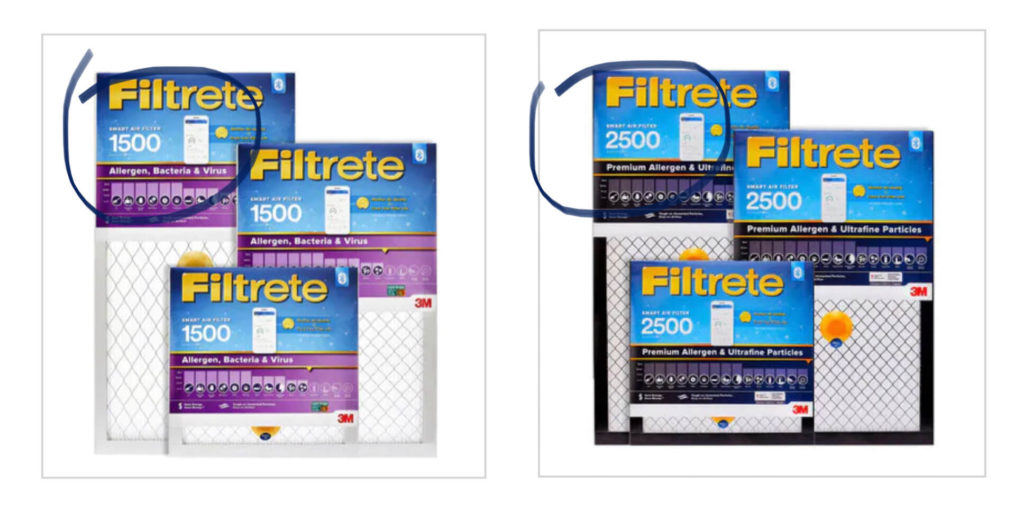
Why We Have to Change our Air Filters
After a period of time our air filters get loaded with particulates that have been trapped in the fiber structure. You can visibly see this accumulation build over time as the filter first begins to look a little dirty and then a gray dust film coats the surface. While the filter will continue to remove particulates from the air, the loaded filters will become more and more “clogged”. As the filter accumulates more dust, the air can move through it less easily. We characterize how easily the air can move through a filter by the pressure drop across the filter. With no filter in place the pressure drop is zero. When a new filter is in place the pressure drop is small (not zero because of the fibers present in the filter) and as the filter is loaded with more and more dust the pressure drop gets higher and higher.
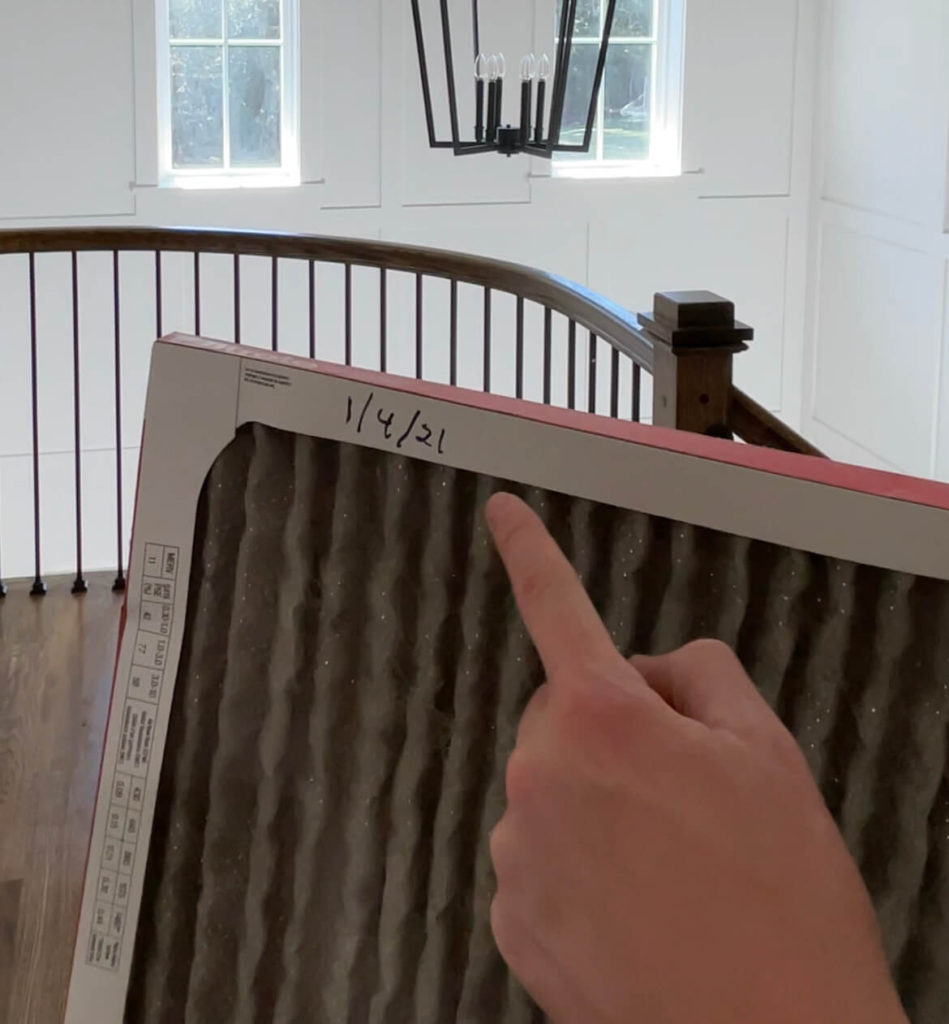
A large fan is used to push air through our HVAC systems. The amount of electrical energy (and cost) that it takes to push the air is dependent on the sizing and length of ductwork but also any additional pressure drops that are added to the system, like a loaded filter. A loaded filter, with a large pressure drop, requires the fan motor to use more energy to push the air. In extreme cases a badly clogged filter can put additional unwanted stress on the fan motor, shortening its life. In short, filters need to be changed regularly to save energy costs and minimize the stress on your HVAC system.
Here is the thing – clearly I know the importance of changing my home air filters but I still have a hard time remembering to do so. I write the install date on the filters, I put a calendar reminder in my phone to check them after 2 months and I have plenty on hand but I still often wait way too long!
I love smart home products and recently read amazing reviews of the Filtrete™ Smart Air Filters on Amazon (4.7/5 stars) and had to try them out. I have always used Filtrete™ Brand filters in our home and the idea that a filter can tell me when it needs to be changed via a Bluetooth® enabled pressure sensor sounded really amazing.
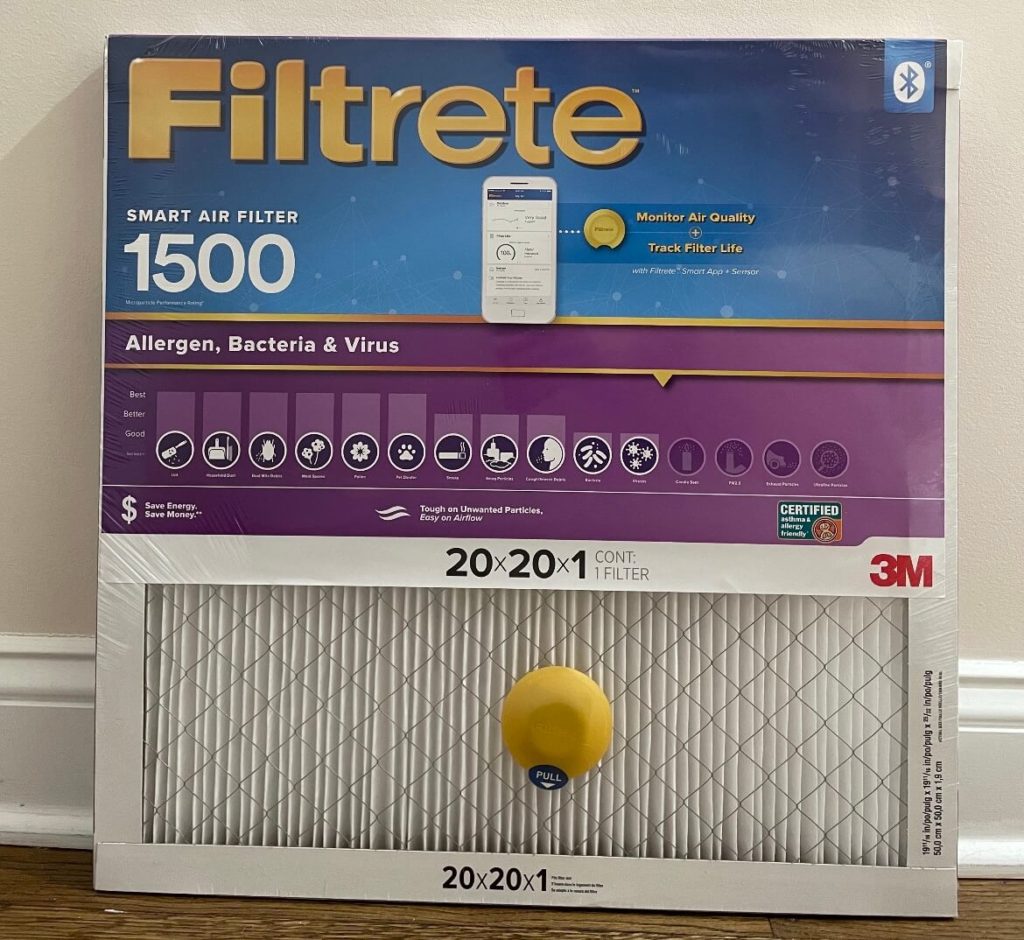
The Filtrete™ Smart Air Filters look the same as their traditional air filters except for a small yellow pressure sensor that is attached to the surface. This sensor is Bluetooth® LE-enabled and designed to monitor the pressure drop change across the filter over its lifetime. It sends this data to the Filtrete™ Smart App and can estimate how much life is left based on air flow and usage and send you a push notification when it is time to change!
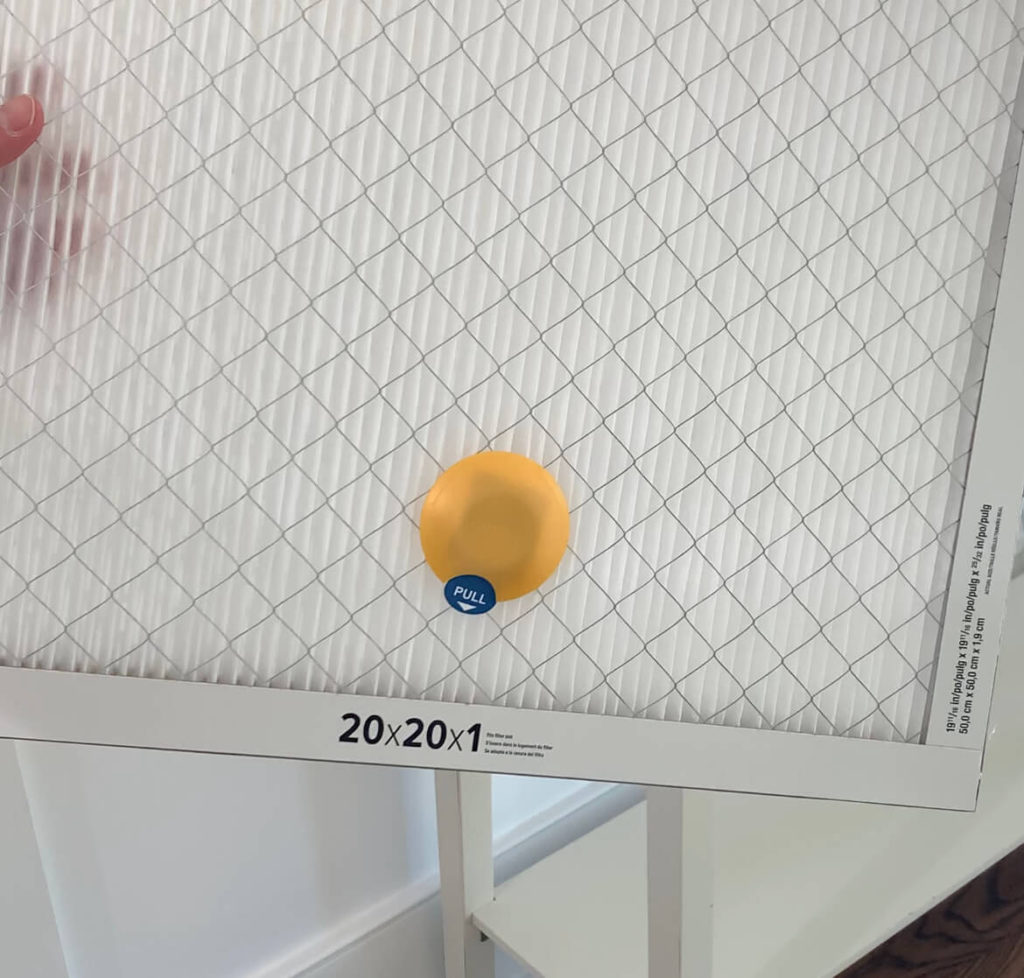
I really like how quick and seamless the setup of the app and the syncing of new filters was. The app took 3 minutes to download and setup and syncing a new filter was as easy as hitting a single button on the app, pulling the little blue tab on the filters and naming the filter location, a total of 30 seconds. The app also has useful information such as outdoor air quality reports based on your location, syncing with popular voice assistants and an easy mechanism for you to reorder replacement filters.
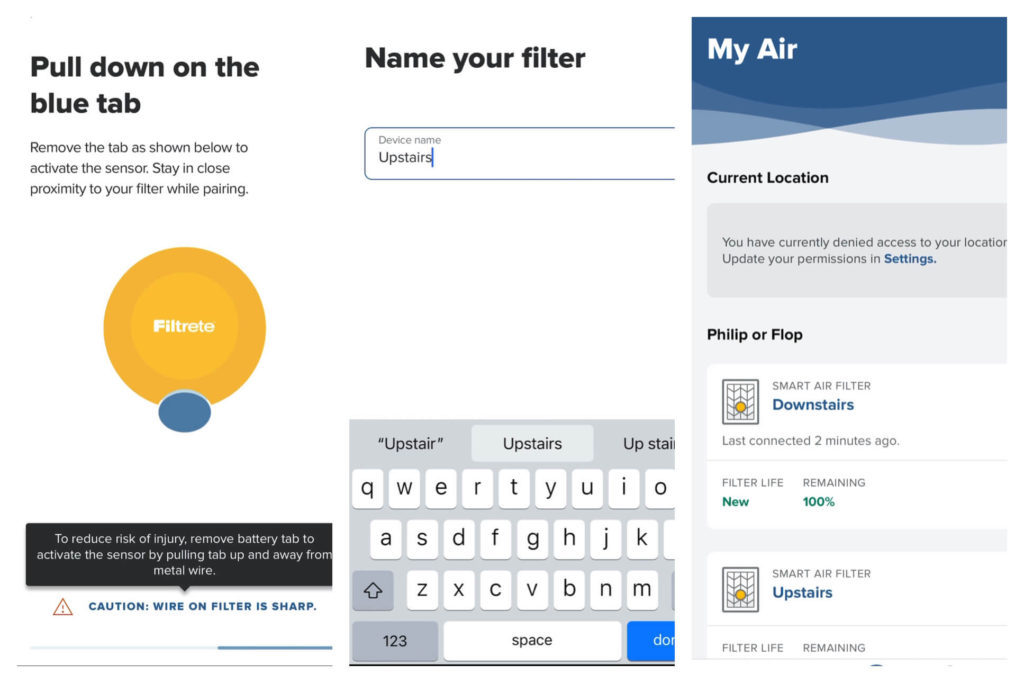
These filters are now installed and running, and I will update this post with my additional impressions when these smart filters tell me they have reached their end of life!